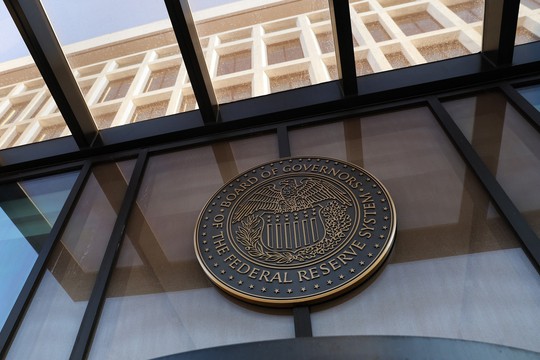“The Fed is bankrupt — and I don’t just mean intellectually”, Thomas L. Hogan, Ph.D. writes, a senior research faculty at American Institute for Economic Research (AIER) and the ex-chief economist for the U.S. Senate Committee on Banking, Housing and Urban Affairs.
Federal Reserve Chair Jerome Powell recently testified before Congress on the current state of the US economy. In addition to monetary policy, Powell was questioned about the Fed’s regulatory proposals regarding cryptocurrencies and climate-related financial risks.
Barely mentioned, however, was the Fed’s balance sheet. The Fed has experienced significant operating losses over the last six months, which have exhausted its existing capital. Those losses represent foregone revenue to the US Treasury.
In the post-pandemic period, the Fed expanded the money supply significantly to support a swift economic recovery. It did so by purchasing vast amounts of US Treasury bonds and mortgage-backed securities. While those assets seemed like good investments at first, they are now a major hole in the Fed’s financial position.
When the bulk of the Fed’s quantitative easing (QE) programs took place in 2020 and 2021, market rates on long-term Treasury bonds fluctuated mostly in the range of 1.5 to 2.0 percent.
Now, the Fed has raised the interest it pays to 4.55 percent on ONRRPs and 4.65 percent on bank reserves, but the rates it earns on its QE purchases remain mostly unchanged. Assuming, as a rough approximation, that the bonds it purchased pay an average rate of 1.75 percent, and the average rate paid on bank reserves and ONRRPs is 4.6 percent, then the Fed is paying about 2.85 percent per year more than it receives on its $8 trillion dollar securities portfolio. That’s a loss of $228 billion per year!
Like a private bank, the Fed maintains some level of capital as a buffer against losses. When those losses exceed the value of its capital, the Fed becomes insolvent, meaning the liabilities it owes to others are greater than the total value of the assets it holds.
The most recent data show that the Fed owes the Treasury over $41 billion, which exceeds its total capital. The Fed, by common standards, is indeed insolvent.
What does the Fed do when its liabilities exceed its assets? It doesn’t go into legal bankruptcy like a private company would. Instead, it creates fictitious accounts on the assets side of its balance sheet, known as “deferred assets,” to offset its increasing liabilities.
At a time the Fed is already worsening the US fiscal position by raising interest rates (and therefore interest payments on the federal debt), it is further robbing the Treasury of revenues by deferring them into the future. Those deferred payments, of course, must be shouldered by American taxpayers until the Fed’s remittances resume.
In addition to its role in managing the money supply, the Fed is the primary regulator of most US banks. If any private bank behaved this irresponsibly, regulators, such as the Fed or Federal Deposit Insurance Corporation (FDIC), would force it to close. Bank managers would lose their jobs and incomes.
Clearly, Congress is not planning to shut down the Fed (!), and is unlikely to punish it for its poor performance, but there are changes that could be made, Thomas L. Hogan, Ph.D. writes.
read more in our Telegram-channel https://t.me/The_International_Affairs

 10:59 19.04.2023 •
10:59 19.04.2023 •























